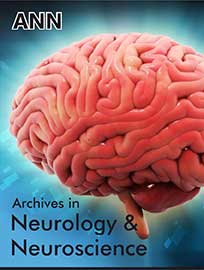 Review Article
Review Article
Sleep and Neurodevelopment Convergence is Reflected in the Overlap of their Genetic Architecture
Mariana Moysés-Oliveira1, Monica L Andersen1,2 and Sergio Tufik1,2*
1Sleep Institute, Associação Fundo de Incentivo à Pesquisa. São Paulo, Brazil
2Departamento de Psicobiologia, Universidade Federal de São Paulo, S]9ão Paulo, Brazil
Sergio Tufik, Sleep Institute, Rua Marselhesa, 500, São Paulo, SP - 04020060, Brazil.
Received Date:July 11, 2024; Published Date:August 07, 2024
Review Article
Sleep-related phenotypes have been frequently reported in early on-set epileptic encephalopathies and in developmental delay conditions [1], yet the convergent pathogenetic mechanisms between these comorbidities are largely unknown. Sleep disorders remain poorly characterized in children with rare genetic syndromes, with most sleep reports on these cohorts being provided by subjective evaluations retrieved from caregivers [2]. Despite the strong evidence demonstrating the cruciality of sleep for central nervous system maturation [3], the extent to which sleep-associated genetic factors are interconnected and ultimately converge on neuronal pathways is still a knowledge void to the field.
During the past five years, we have observed great advances in human population genetic studies, driven by the aggregation of large-scale cohorts, which leveraged long lists of genetic variants implicated in sleep and in neurodevelopment physiology. Given that the genetic architecture underlying the most prevalent sleep disturbances is based on common variation of small effect, aiming to increase statistical power, large-scale sleep genetic studies are forced to encompass majorly neurotypical individuals in their cohorts [4]. Exome studies on rare genetic syndromes related to neurodevelopmental disorders are a robust resource of genomic variation with unambiguous interpretation on pathogenic effects. However, the patients’ inclusion criteria applied to recruit patients with rare syndromes frequently do not consider sleep patterns. Thus, the greater challenge falls over the identification of shared genetic factors that might prone individuals with rare neurodevelopmental deficits to sleep disturbances.
Prompted by the necessity of functional elucidation over pathogenic mechanisms which link the genetic basis of sleep and neurodevelopment, in Moyses-Oliveira et al. (2023 - Journal of Neuroscience Research), we address the hypothesis that there are shared genetic factors underlying the pathogenesis of sleep traits, epilepsy, and developmental disorders [5]. Our hypothesis does not exclude the reciprocal interaction between behavioral and sleep traits in neurodevelopment syndromes, which might trigger a reinforcing loop impairing circadian patterns. Nevertheless, focused on the dissection of shared genetic factors with the aim of uncovering specific neuronal circuits involved on the interplay between sleep and neurodevelopment.
Benefited from the most recent and largest sleep, earlyonset epileptic encephalopathies and autism spectrum disorder genetic studies, we leveraged an updated lists of genes which are associated with those phenotypes. After demonstrating significant overlap between sleep and neurodevelopment associated genes, we generate functional interaction networks from the set of intersect genes. Based on those functional networks, we pinpoint critical nodes of coalescence between biological processes related to sleep and neurodevelopment. Our results indicate that the intersect between sleep traits and rare epileptic encephalopathiesrelated syndromes encompass specific clusters of synaptic genes implicated in excitatory and inhibitory neuronal circuits. We highlighted the significance of the retrograde endocannabinoid circuit, which has overwhelming association with developmental epileptic encephalopathies and has recently been implicated in sleep. It has been demonstrated that endocannabinoid signaling exhibit distinct patterns over the course of a day, with serum levels of 2-arachidonoyl-glycerol showing their lowest values in mid-sleep, increasing upon wake to reach their peak in mid-afternoon [6]. Furthermore, investigations exploring the effects of cannabinoids on sleep have yielded diverse findings, including prolonged sleep duration, heightened self-reported feelings of refreshment upon awakening, improved sleep quality, reduced frequency of nocturnal awakenings, decreased incidents of leaving the bed, shortened sleep onset latency, decreased severity of insomnia, and diminished apnea-hypopnea index [6].
This article provides a novel outlook on the relationship between sleep disorders and rare monogenetic syndromes associated with neurodevelopmental deficits. This genetic overlap approach harbors the potential to pave the way for future studies focused on precision medicine applications. As populational genetic studies gain sample size, increased phenotype granularity can be incorporated in emergent sleep-based cohorts, uncovering peculiar biological pathways and druggable targets related to specific endophenotypes.
Acknowledgement
AFIP, FAPESP (#2020/13467-8, #2021/09089-0) and CNPq.
Conflict of Interest
No Conflict of interest.
References
- Verhoeff Maria E, Laura ME Blanken, Desana Kocevska, Viara R Mileva-Seitz, Vincent WV Jaddoe, et al. (2018) The bidirectional association between sleep problems and autism spectrum disorder: a population-based cohort study. Molecular Autism 9: 8.
- Reynolds AnnM, Beth A Malow (2011) Sleep and autism spectrum disorders. Pediatric Clinics of North America 58: 685–698.
- Kocevska Desana, Ryan L Muetzel, Annemarie I Luik, Maartje PCM Luijk, Vincent W Jaddoe, et al. (2017) The Developmental Course of Sleep Disturbances Across Childhood Relates to Brain Morphology at Age 7: The Generation R Study. Sleep 40.
- Watanabe Kyoko, Philip R Jansen, Jeanne E Savage, Priyanka Nandakumar, Xin Wang, et al (2022) Genome-wide meta-analysis of insomnia prioritizes genes associated with metabolic and psychiatric pathways. Nature Genetics 54: 1125–1132.
- Moysés-Oliveira, Mariana Mayara Paschalidis, Lais A Souza-Cunha, Pedro A Esteves-Guerreiro, Luana Nayara Gallego Adami, et al (2023) Genetic basis of sleep phenotypes and rare neurodevelopmental syndromes reveal shared molecular pathways. Journal of Neuroscience Research 101: 1058–1067.
- Lavender Isobel, Iain S McGregor, Anastasia Suraev, Ronald R Grunstein, Camilla M Hoyos (2022) Cannabinoids, Insomnia, and Other Sleep Disorders. Chest 162: 452–465.
-
Mariana Moysés-Oliveira, Monica L Andersen and Sergio Tufik*. Sleep and Neurodevelopment Convergence is Reflected in the Overlap of their Genetic Architecture. Arch Neurol & Neurosci. 16(5): 2024. ANN.MS.ID.000899.
-
Acute Polyradiculoneuritis, Neurology, Guillain-barre; Fann teaching hospital, neuropathy, cranial nerves, immunotherapy, Neuroscience, neurogenic syndrome, epidemiological, Dysphonia.
-

This work is licensed under a Creative Commons Attribution-NonCommercial 4.0 International License.






